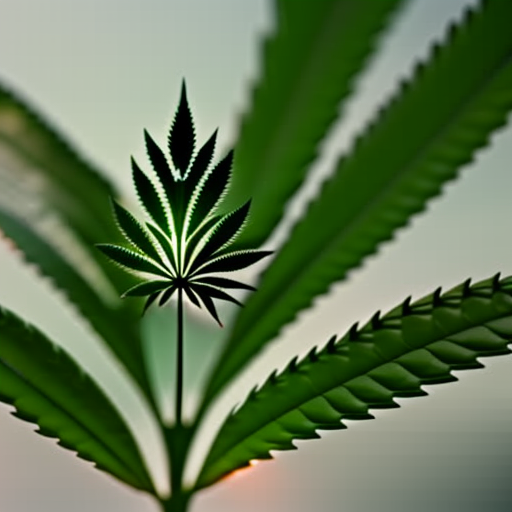
Recent research conducted by scientists at the School of Integrative Plant Science at Cornell AgriTech’s College of Agriculture and Life Sciences (CALS) has found that cannabinoids produced by hemp plants have the potential to be used as natural pesticides. The study revealed that hemp plants with a higher concentration of cannabinoids in their leaves displayed less damage from chewing insects compared to plants with lower levels of cannabinoids.
The researchers believe that further investigation into this area could lead to the development of new natural insecticides, primarily for use on non-edible plants. However, using these pesticides on food crops seems unlikely due to the pharmacological effects of cannabinoids such as CBDA, THCA, and GBGA. These compounds can be converted to CBD, THC, and CBG, respectively, through a process called decarboxylation when exposed to heat.
Larry Smart, a plant breeder and professor at CALS, explained that while the intoxicating and medicinal effects of cannabinoids have been extensively studied, little research has been conducted to understand why cannabis plants produce over 100 distinct substances. It has been speculated that these compounds act as defensive mechanisms in protecting female flowers and seeds, a common concept observed in plants.
Cornell University launched its hemp breeding program in 2017 as part of their efforts to evaluate different hemp cultivars for local soil and climate conditions. During their research, the scientists discovered that hemp varieties sourced from a Ukrainian breeding program that did not produce cannabinoids were highly susceptible to damage from Japanese beetles. In contrast, other hemp varieties containing cannabinoids displayed resistance to insect damage.
To further explore this phenomenon, the researchers isolated CBDA and CBGA for controlled insect feeding studies. THCA was not included in the research due to strict federal limits on THC in hemp crops. The cannabinoid extracts were mixed into an artificial insect diet at various concentrations. As the concentration of cannabinoids increased, there was a decrease in larval growth and survival rates.
George Stack, a postdoctoral researcher in Larry Smart’s lab and one of the authors of the study, stated that this research provides insights into the functioning of cannabinoids in natural systems. It could potentially help in developing THC-compliant hemp cultivars that possess built-in defenses against herbivores. However, further investigation is required to determine if sap-sucking insects, such as aphids, are also affected by cannabinoids. The illegality of marijuana at the federal level poses challenges to conducting this research.
While the potential use of cannabinoids as pesticides is an exciting area for future exploration, regulatory barriers may arise due to the pharmacological activity of these compounds. Additionally, more studies are needed to understand which pests cannabinoids would be effective against.
The study titled “Cannabinoids Function in Defense Against Chewing Herbivores in Cannabis Sativa L.” was published in October by the peer-reviewed journal Horticulture Research. The researchers hope that their findings will contribute to advancements in natural pest management strategies and the development of sustainable agricultural practices.

